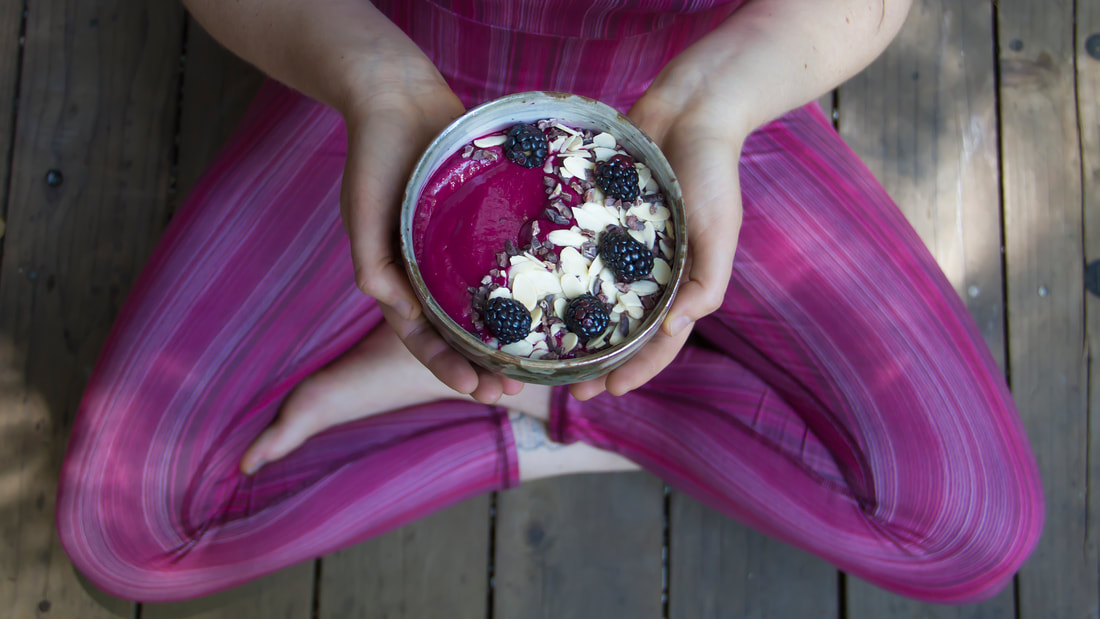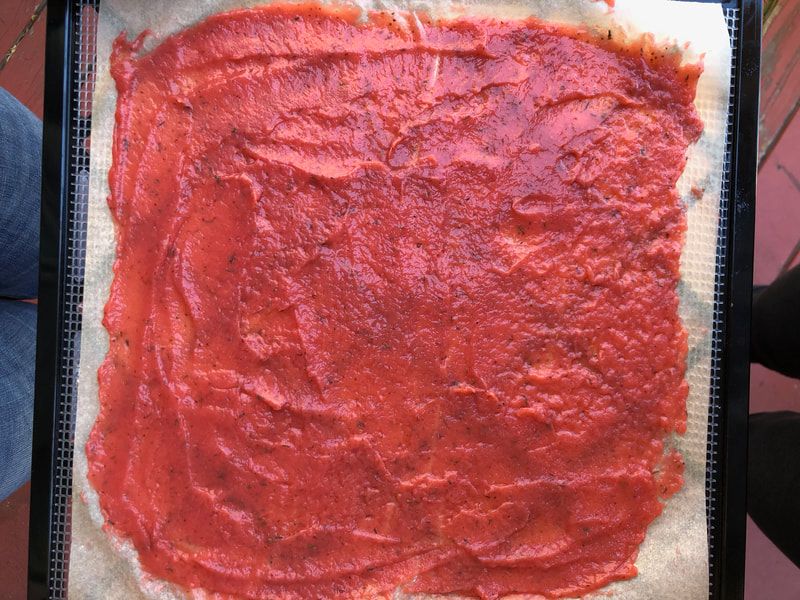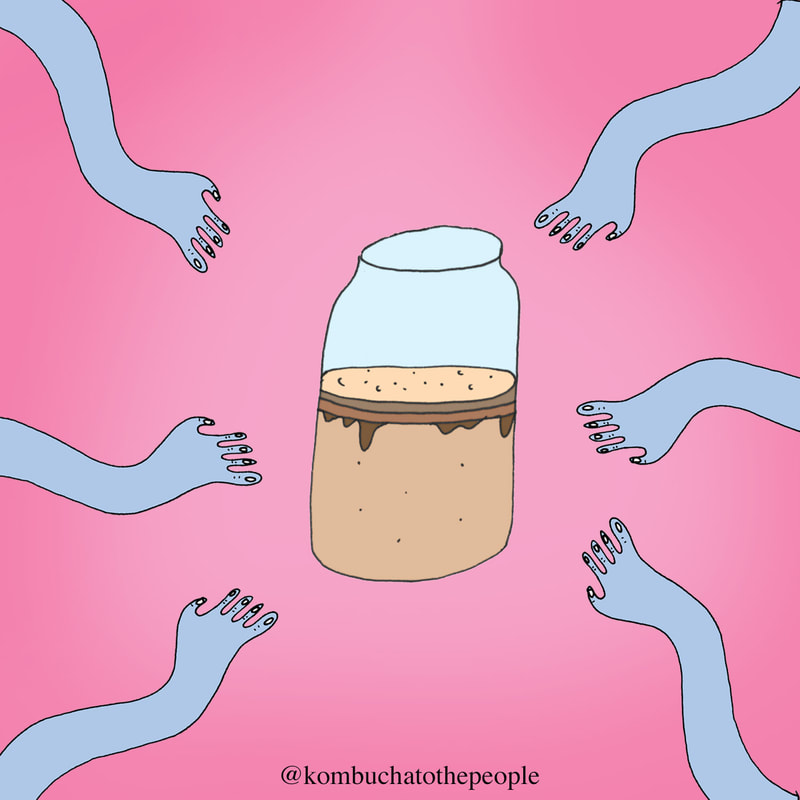How to make kombucha vinegar.
1 Comment
How a SCOBY Named Sheila Changed My Life.I wrote a guest article for BobCut Mag all about how brewing kombucha changed my life check it out here!
Is your kombucha too tart? Not to worry, you can make probiotic salad dressing!Super fermented kombucha has an excellent place in the kitchen! Whether your tart brew was accidental or intentional, making kombucha salad dressing is one of the best ways to put your extra fermented kombucha to good use. You can make a powerful kombucha vinegar by simply allowing a batch of Kombucha to ferment until all of the sugar is consumed. This usually takes at least 6-10 weeks. Alternatively I have used regularly brewed kombucha in these recipes and have had good results. If I have a mildly fermented kombucha, I will just add 1-2 tsp of lemon juice or apple cider vinegar to sour it up! Enjoy some of my favorite kombucha salad dressing recipes below and know that you can replace the vinegar in any salad dressing recipe with kombucha vinegar.
I have been teaching kombucha brewing workshops since 2012 wanted to share answers to some of the most common questions I receive: Safety Is kombucha safe to make at home? Just like making anything you put in your mouth, kombucha should be made with safety and care. I cannot guarantee the safety of your home brewed kombucha, but it is actually safer than fermenting or preserving many other foods at home due to its very low pH level. The acidity of kombucha makes it difficult for any unfriendly organisms to survive in it. The major warning I give to my workshop attendees is if there is mold growing on your brew, throw it out buddy. How much kombucha should I drink? Everyone is different! Start with one cup and see how your body feels. Most people don’t have very many fermented foods in their diets, so if this is your only one then go slow work your way up. If you feel heavy, bloated or burp a lot after you drink kombucha then you may be drinking it too fast or too much. What container should I brew my kombucha in? Glass is the best! Kombucha is very acidic and can leach the material of the container into your brew (yuck!). This is why plastic and metal are no gos for brewing (and storing) kombucha. If you want to use a food grade ceramic contain just make sure the glaze is safe for fermentation. What are those brown gloopy things in my kombucha? They are just yeast strands and are an indicator that awesome fermentation is going on. With that said too much yeast won’t make a tasty brew. Too much yeast could happen because: -The brewing temperature is too high. -You are using a different kind of sugar (cane sugar is recommended!) -Using very yeasty starter liquid from the bottom of the batch. I suggest saving some from the top or stirring your kombucha before you bottle. Not a fan of yeast? Strain it out! Use a clean fine mesh strainer to filter out those gloopies in your bottle process. Do I have to use sugar to feed my SCOBY? Yes! Don't worry all that sugar isn't all for you, it's food for your SCOBY. What kind of sugar should I use for brewing kombucha? Organic cane sugar! It is tempting to want to use brown sugar, turbinado or coconut sugar for a “healthier brew,” but these sugars are too challenging for the SCOBY to break down. I have also found that the super mineral rich sugars (like coconut sugar) make my batches too yeasty and have an off flavor. What kind of tea should I use for my kombucha? I have found that black tea is the best! You can use any of the “true teas” that are from the camellia sinensis plant: black tea, green tea, oolong, white tea, etc. The tea provides micronutrients for your SCOBY. Save the flavors for your secondary fermentation. Flavored tea like “peach black tea” can mess with the health of your SCOBY. Any herbal teas like chamomile, lavender and rose, I also save for my secondary fermentation. Have more kombucha questions? Leave a comment on this blog and I will answer them in my next kombucha basics blog post!Bringing mindfulness to a kitchen ritual, like brewing kombucha, can help us direct our attention and cultivate more peace, gratitude and joy in our life. We may often catch ourselves in a storm of thought loops and reactions. If we are caught up in the past or the future we are not tuned into what we are sensing in the present. We can use the power of feeling, touching, seeing, hearing, and tasting to settle in the current moment. One tool to find more peace in our internal world is to deliberately focus on an activity. Whether it's our breath, walking or cooking something, we can bring our awareness to our body sensations to draw us back to the now. The process of making a primary fermentation of kombucha is the same every time. You brew the tea, add sugar, let it cool and pour it into your brewing vessel. After you get the hang of the process, you can relax and enjoy into the dance around the kitchen. From listening to the sound of the water boiling to stirring sugar in the pot with a spoon, there are so many small rituals to pay attention to. The relationship I have with my slimy jellyfish-like kombucha brewing organisms (known as a SCOBY - symbiotic colony of bacteria and yeast) is also one that reminds me to slow down and check in with myself. 4 Ways Brewing Kombucha Facilitates Mindfulness:
Check out Lila Volkas N.C.'s blog post: the Top 4 reasons it is important to brew kombucha in the age of convenience.
Kombucha to the People created four high quality blends of fruits and herbs to flavor your secondary fermentation. Purchase here!Simply add a spoonful of these kombucha flavorings to F2 bottle to boost the taste and health benefits of your homemade kombucha!
|
Archives
June 2020
Categories
All
|






















 RSS Feed
RSS Feed